Ensuring your baby is dressed appropriately for the weather is a crucial aspect of parenting. Today, we dive into dressing your little one for the delightful realm of 60-degree weather. This temperature range, neither too hot nor too cold, presents a unique set of considerations. You want your baby to be comfortable and safe, ready for outdoor adventures or peaceful slumber.
This guide will walk you through the essentials of dressing your baby for 60-degree weather. From understanding the nuances of this mild climate to choosing the right clothing materials, we’ve got you covered. By the end of this comprehensive resource, you’ll have the knowledge and confidence to ensure your baby’s well-being in this delightful weather. So, let’s embark on this journey to keep your bundle of joy cozy and content in 60-degree temperatures.
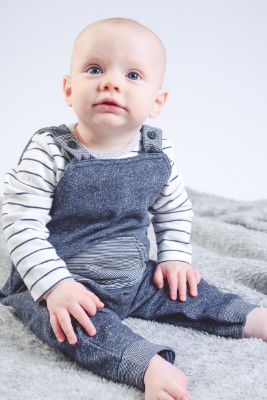
What Is 60 Degree Weather For A Baby?
60-degree weather typically refers to outdoor temperatures where the thermometer reads approximately 60 degrees Fahrenheit (15.5 degrees Celsius). It’s considered a mild and comfortable climate for most people.
- Variations: It’s important to note that 60-degree weather can vary depending on sunlight, wind, and humidity. For example, a sunny day at 60 degrees may feel warmer than a cloudy or windy day at the same temperature.
- Comfort Level: Many adults find 60-degree weather pleasant, but babies have different comfort needs. While it’s not extremely hot or cold, it’s crucial to strike a balance in dressing your baby to ensure they stay comfortable, neither too warm nor too chilly.
- Daily Forecast: Always check the daily weather forecast because conditions can change. Preparing the right clothing for the specific day’s weather ensures your baby stays cozy and safe.
Understanding 60-degree weather sets the stage for making informed clothing choices for your baby. It’s a climate where layering and appropriate materials significantly keep your little one comfortable throughout the day.
Can A Baby Be Outside In 60 Degree Weather?
A baby can be outside in 60-degree weather, but several factors must be considered to ensure their comfort and safety. Here’s an explanation:
- Temperature Comfort: 60-degree weather is generally mild and comfortable for most people, including babies. It’s not too hot or cold, making it suitable for outdoor activities.
- Clothing: Dressing your baby appropriately for the day’s specific conditions is crucial. In 60-degree weather, you should dress your baby in layers. Start with a onesie or bodysuit as a base layer and then add layers like lightweight pants, a sweater or jacket, and possibly a hat or sun hat, depending on the sunlight and wind conditions.
- Sun Protection: Don’t forget to protect your baby’s delicate skin from the sun if it’s a sunny day. Use baby-safe sunscreen, dress them in sun-protective clothing, and consider using a stroller or carrier with a canopy or sunshade.
- Duration: Consider how long you plan to be outside. Short outings like a stroll or playtime in the yard are generally safe in 60-degree weather. However, if you plan on being outside for an extended period, it’s important to monitor your baby’s comfort and adjust their clothing as needed.
- Monitoring:
- Keep a close eye on your baby to ensure they are neither too hot nor too cold.
- Look for signs of discomfort, such as fussiness, flushed cheeks, or shivering.
- Make adjustments to their clothing accordingly.
How To Dress Baby For 60 Degree Weather? – Step-By-Step Guide
Let’s break down how to dress a baby for 60-degree weather based on the outline I provided earlier:
Layering for Comfort
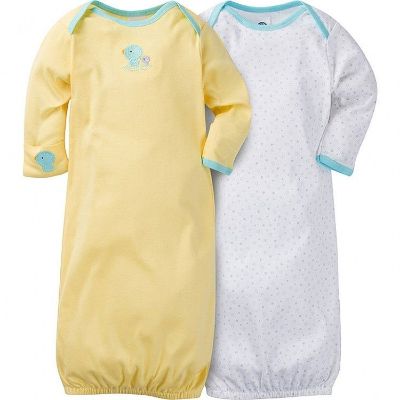
Layering is key in dressing your baby for 60-degree weather. Begin with a comfortable base layer, such as a onesie or bodysuit. Then, add additional layers like lightweight pants or leggings, a long-sleeved shirt or sweater, and possibly a light jacket or cardigan. Layering allows you to adjust your baby’s clothing as needed throughout the day, ensuring their comfort.
Choosing the Right Materials
Select clothing materials that are appropriate for 60-degree weather. Breathable fabrics like cotton and fleece are excellent choices. Avoid heavy or overly warm materials that can make your baby too hot. Opt for soft, comfortable, and hypoallergenic fabrics that won’t irritate your baby’s sensitive skin.
Daytime Dressing
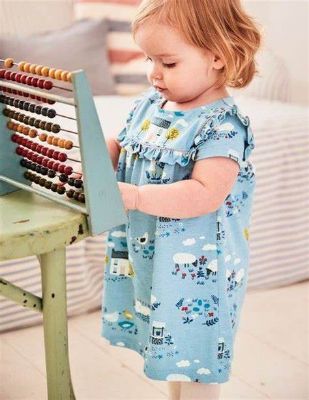
For daytime outings in 60-degree weather, dress your baby in layers. Start with a onesie or bodysuit, then add pants or shorts, depending on the season. If needed, top it off with a long-sleeved shirt and a light jacket or sweater. Remember a hat to protect your head from the sun or wind.
Outerwear Essentials
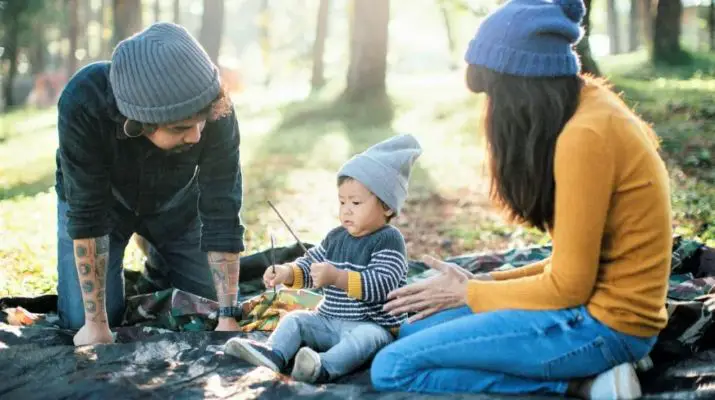
When it comes to outerwear, a light jacket, cardigan, or sweater can provide extra warmth during cooler moments of the day. Ensure that these outer layers are easy to put on and remove as the temperature fluctuates.
Footwear and Accessories
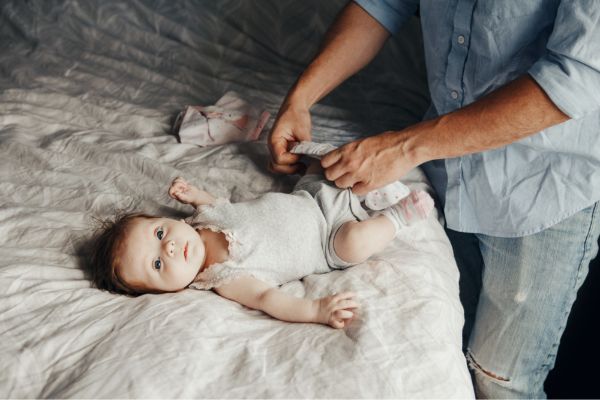
Choose appropriate footwear for your baby, such as soft-soled shoes or booties. Remember to put on socks to keep your feet warm. Additionally, consider accessories like mittens and sunglasses to protect their hands and eyes if necessary.
Nighttime Dressing

For nighttime dressing in 60-degree weather, use a sleep sack or wearable blanket to keep your baby warm without the risk of loose blankets. Ensure that the sleepwear is appropriate for the temperature and that your baby is not overdressed for sleep to prevent overheating.
Tips for On-the-Go
When planning outdoor activities with your baby, have extra layers in case the weather changes. You can use stroller blankets or carriers to keep your baby cozy while you’re on the move. Keep an eye on their comfort and make adjustments as needed.
Monitoring Your Baby’s Comfort
Finally, always monitor your baby’s body temperature. Look for signs of overheating or being too cold, such as sweating or shivering. Be prepared to adjust their clothing to maintain their comfort throughout the day.
Following these guidelines will prepare you to dress your baby appropriately for 60-degree weather, ensuring their comfort and safety in this mild climate.
How Should I Dress My Baby To Sleep In 60 Degree Weather?

Dressing your baby for sleep in 60-degree weather requires careful consideration to ensure it stays comfortable and safe throughout the night. Here’s how you should dress your baby for sleep in this temperature:
- Use a Sleep Sack or Wearable Blanket: In cooler temperatures, it’s best to avoid loose blankets in the Crib, as they can pose a suffocation risk. Instead, opt for a sleep sack or wearable blanket. These snug-fitting garments provide warmth without the risk of covering your baby’s face.
- Choose the Right Weight: Sleep sacks come in different weights, typically categorized as lightweight, medium, and heavyweight. For 60-degree weather, a lightweight or medium-weight sleep sack is usually sufficient. Check the label or packaging for the appropriate TOG (Thermal Overall Grade) rating to ensure it’s suitable for the temperature.
- Long-Sleeved Onesie or Pajamas: Under the sleep sack, dress your baby in a long-sleeved onesie or footed pajamas made of a breathable, comfortable material like cotton. Avoid heavy or overly warm fabrics.
- Socks: If your baby’s feet tend to get cold, you can put them in lightweight cotton socks to keep their toes warm.
- Room Temperature Control: Maintain a comfortable room temperature in your baby’s sleeping area, ideally between 68 to 72 degrees Fahrenheit (20 to 22 degrees Celsius). Use a room thermometer to monitor the temperature and adjust the room’s heating or cooling as needed.
- Check for Overheating: During the night, check your baby’s neck or back to ensure they are not sweating or feeling excessively warm. Overheating can be harmful, so keeping them comfortably warm but not too hot is essential.
- No Additional Bedding: Avoid using additional blankets or quilts inside the Crib. The sleep sack or wearable blanket should only cover your baby’s needs.
- Keep the Crib Safe: Ensure that the Crib is free of any potential hazards or items that could cover your baby’s face. This includes stuffed animals, pillows, bumper pads, and loose bedding.
How Hot Is Too Hot For Baby To Be Outside?
The ideal outdoor temperature for a baby can vary depending on several factors, including age, health, and specific weather conditions. Generally, no strict temperature threshold applies because what’s considered “too hot” for one baby might be different for another. However, there are some guidelines to consider:
- Newborns and Infants: Newborns and very young infants are more sensitive to temperature extremes. It’s best to avoid taking them outside in extremely hot weather, especially if the temperature exceeds 90 degrees Fahrenheit (32 degrees Celsius). Their bodies cannot regulate temperature, and they can quickly become overheated.
- Heat Index: Consider the heat index or “feels like” temperature, which considers humidity levels. High humidity can make a lower temperature feel much hotter. If the heat index is high, limiting outdoor exposure for babies is advisable.
- Hydration: Regardless of temperature, keeping babies well-hydrated in hot weather is crucial. Offer breast milk or formula frequently to prevent dehydration.
- Sun Protection: When taking your baby outside in hot weather, protect them from the sun. Use sunscreen on babies older than six months, and dress them in lightweight, long-sleeved clothing and a wide-brimmed hat.
- Shade and Timing: Plan outdoor activities during cooler parts of the day, such as early morning or late afternoon. Seek shade to avoid direct sunlight, which can cause sunburn and overheating.
- Watch for Signs of Overheating: Be vigilant for signs of overheating, such as excessive sweating, red or flushed skin, rapid breathing, and fussiness. If you notice these signs, take your baby indoors and cool them down gradually.
- Consult a Pediatrician: If you have concerns about whether it’s too hot for your baby to be outside, consult your pediatrician. They can provide guidance based on your baby’s specific health and needs.
Conclusion
In this guide, we’ve covered the essentials of dressing your baby for 60-degree weather. With knowledge about layering, suitable materials, and outfit choices for different times of day, you’re well-prepared to ensure your baby’s comfort and safety in this mild climate. Remember to monitor their comfort, adapt clothing, and prioritize their well-being. With these insights, you can enjoy the delightful 60-degree weather with your little one.
